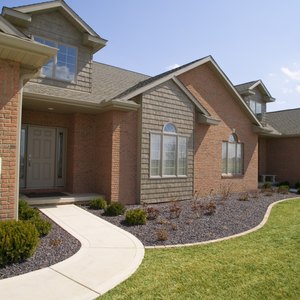
The state of New York launched its School Tax Relief, or STAR, program in the 1998-1999 school year to help relieve the tax burden on property owners. The program redistributes tax dollars for school districts evenly across the state. STAR reduces the taxable value of eligible homes before the school tax rate is applied, meaning homeowners pay less in school district taxes. The state then reimburses the individual school districts for any revenue lost.
Property Requirements
Any residential property used by its owners as their primary residence is potentially eligible for the STAR program. Mixed-use properties, such as an apartment upstairs from a store, are also eligible, although the exemption will only apply to the apartment’s apportioned value, not the building as a whole. The exemption can also be used for an apartment building or other multiple dwelling, but again, the exemption is only applied to the specific apartment where the building owners live. The program defines primary residence as the home where owners reside for most of the year. The exemption can only be used once per owner, so second homes or vacation homes are not eligible.
Basic STAR Eligibility
Homeowners are eligible for the basic STAR program provided the combined income of all owners who live in the home and any owner’s spouse is less than $500,000. Generally, the basic STAR program exempts the first $30,000 of the home’s full value from that district’s school tax. Homeowners only need to apply for the basic exemption once, but their benefit may change each year. The precise exemption amount is calculated annually and changes based on a number of factors that may change from year to year, such as the home’s assessed value and the level of assessment in the community where the home is located.
Enhanced STAR Eligibility
Homeowners over the age of 65 are potentially eligible for the enhanced STAR exemption. If siblings or spouses co-own a home, however, New York only requires one of them to be over 65. The state adjusts the maximum eligible income for the enhanced STAR program yearly based on inflation. In 2013, homeowners had to have a combined income of $79,050 or less to qualify. Like the basic STAR exemption, this income requirement applies to the combined income of all owners and any owners’ spouses who live in the home. Unlike the basic program, enhanced STAR recipients must apply each year and present proof of income. Enhanced STAR applicants who fail to meet the income requirements may receive the basic STAR exemption instead. Enhanced STAR homeowners receive an exemption on the first $63,300 of their homes’ full assessed value.
Potential Savings
Both the basic and enhanced STAR programs reduce the taxable value of a home, with the school district tax rate applied only to the lower amount. The amount an individual homeowner saves varies among school districts, depending on the tax rate for that district and the maximum benefit limit that municipality has established, if any. Other factors affect the savings each homeowner accrues, including the home’s assessed value and the assessed value of other homes in that community. New York law also limits savings to no more than 2 percent greater than a homeowner’s savings the previous year. Most STAR recipients save several hundred dollars on their property taxes each year as a result of the program.
Writer Bio
Jennifer Mueller began writing and editing professionally in 1995, when she became sports editor of her university's newspaper while also writing a bi-monthly general interest column for an independent tourist publication. Mueller holds a Bachelor of Arts in political science from the University of North Carolina at Asheville and a Juris Doctor from Indiana University Maurer School of Law.

